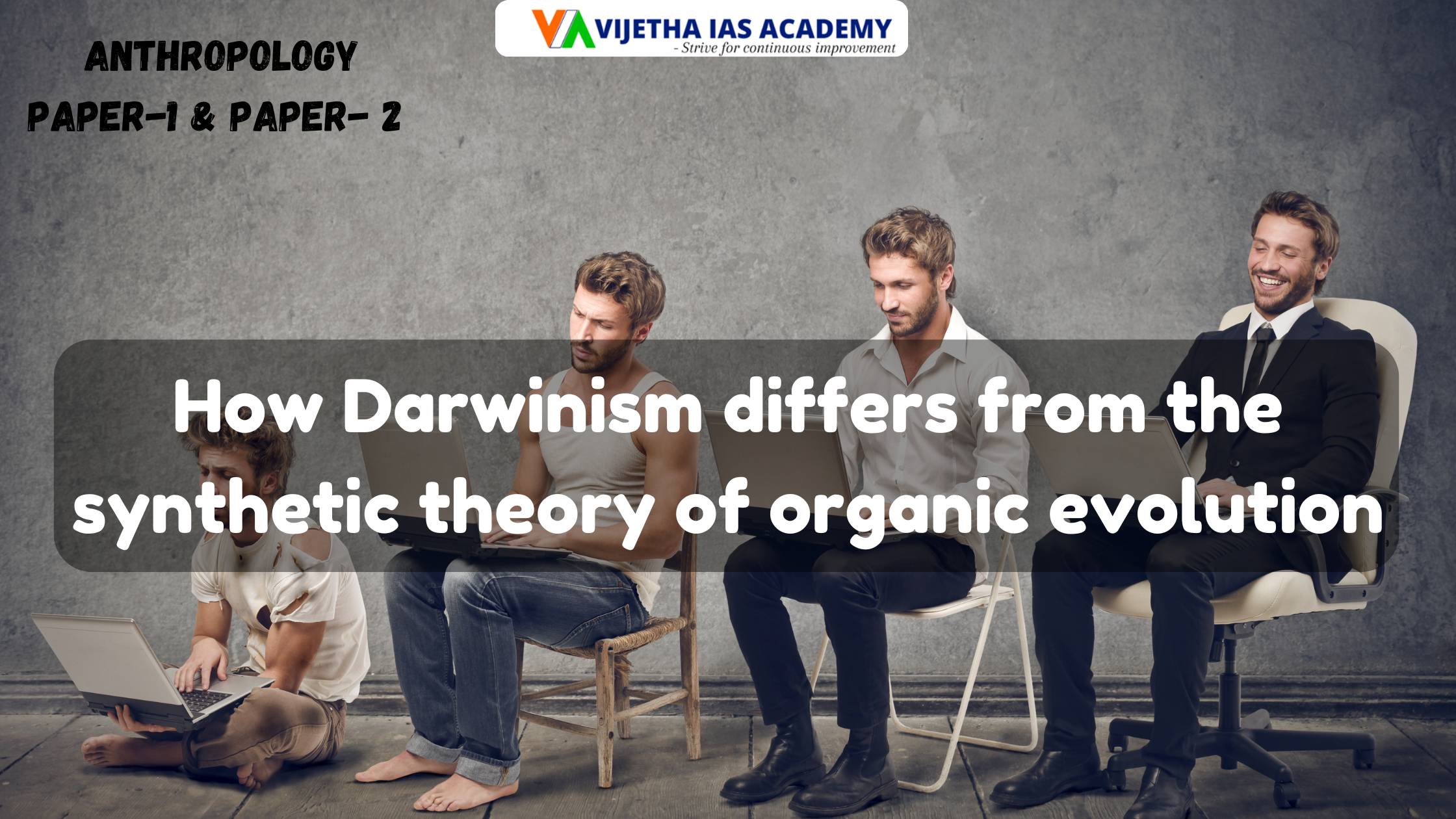
Introduction
Darwinism and the Synthetic Theory of Organic Evolution are pivotal concepts in evolutionary biology, offering distinct frameworks for understanding the process of evolution. While Darwinism laid the foundation for evolutionary theory, the Synthetic Theory, also known as Neo-Darwinism, represents a more advanced synthesis incorporating genetic principles. Understanding the differences between these theories is crucial for grasping the evolution of evolutionary thought.
Main Body
Darwinism: Darwinism, formulated by Charles Darwin in the 19th century, is primarily characterized by the theory of natural selection. Darwin proposed that:
- Variation and Heredity: Individuals within a species exhibit variation, which is inherited by offspring.
- Struggle for Existence: There is a constant struggle for survival due to limited resources, leading to competition among individuals.
- Survival of the Fittest: Individuals with traits better suited to their environment are more likely to survive and reproduce, passing these advantageous traits to the next generation.
- Descent with Modification: Over generations, these favorable traits accumulate, leading to gradual changes in species, or speciation.
Darwinism primarily focused on natural selection as the driving force of evolution, without a clear understanding of the genetic mechanisms behind it.
Synthetic Theory of Organic Evolution: The Synthetic Theory, developed in the 20th century, integrates Darwinian natural selection with Mendelian genetics, forming a more comprehensive framework. Key aspects include:
- Genetics Integration: The theory incorporates genetic principles, emphasizing that mutation and recombination are sources of genetic variation. It highlights that genetic changes, rather than just phenotypic traits, are the basis of evolutionary change.
- Population Genetics: It introduces the concept of populations as the units of evolution, where allele frequencies change over time due to various evolutionary forces including natural selection, genetic drift, gene flow, and mutation.
- Neutral Theory: The Synthetic Theory includes the Neutral Theory of Molecular Evolution, which suggests that many genetic changes are neutral with respect to selection and accumulate due to genetic drift.
- Modern Synthesis: This theory combines insights from various biological disciplines such as genetics, paleontology, systematics, and evolutionary biology, providing a unified explanation of evolutionary processes.
Conclusion
While Darwinism laid the groundwork for evolutionary theory through its focus on natural selection, the Synthetic Theory of Organic Evolution offers a more nuanced and integrated understanding by incorporating genetic principles and modern population genetics. The evolution from Darwinism to the Synthetic Theory reflects advancements in biological science and a more comprehensive view of evolutionary mechanisms. The latter's ability to unify various biological disciplines has solidified its position as the prevailing theory in evolutionary biology.
